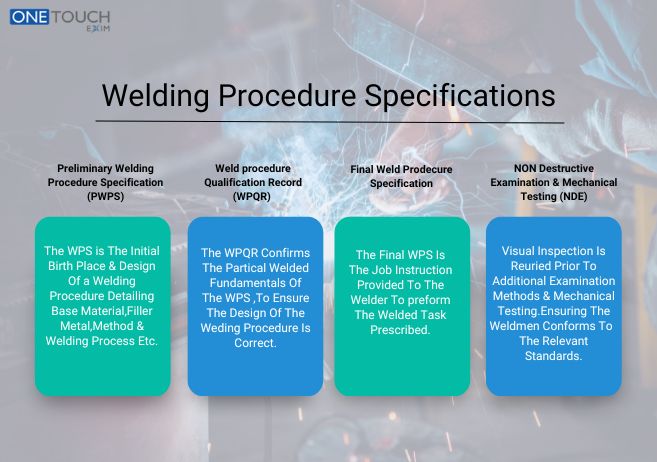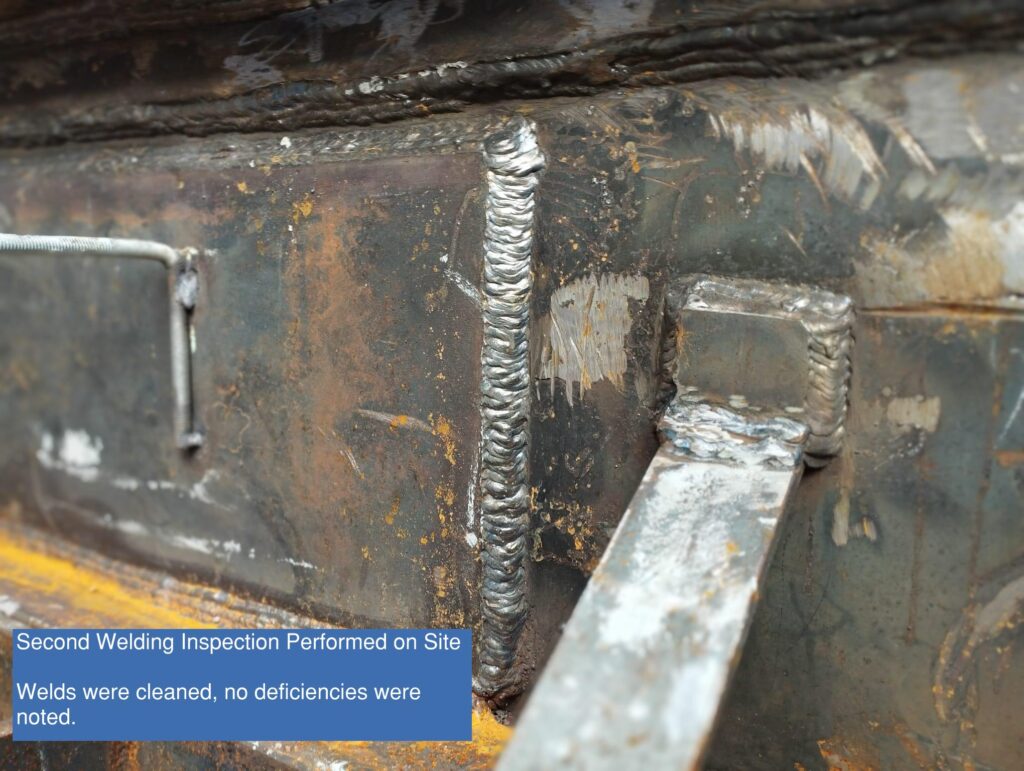Innovative Strategies to Fillet Weld Inspection and Screening: Enhancing Weld Top Quality and Conformity Specifications
In the world of welding, the high quality and honesty of fillet welds play a vital role in guaranteeing the structural strength and dependability of different commercial elements. With the continuous drive for boosted effectiveness and compliance with stringent standards, the expedition of cutting-edge approaches to fillet weld assessment and screening has actually become crucial.
Advanced Non-Destructive Testing Techniques
Making use of state-of-the-art technologies, progressed non-destructive screening methods play a critical role in making certain the integrity and quality of fillet welds. These methods, such as phased selection ultrasonic screening (PAUT) and magnetic fragment testing (MPT), deal detailed insights right into the weld's internal structure without causing any kind of damage to the product. PAUT, for example, utilizes numerous ultrasonic components to inspect the weld from different angles, providing a comprehensive visualization of possible problems like absence of combination or splits.
By using these sophisticated non-destructive testing techniques, weld assessors can accurately evaluate the quality of fillet welds, making certain compliance with sector criteria and regulations. The capacity to detect problems early on not only boosts weld high quality however additionally protects against pricey rework or failings in structural honesty, highlighting the importance of these innovative testing strategies in welding inspections.
Robotics and Automation in Assessment
The assimilation of robotics and automation has reinvented the inspection process for fillet welds, boosting efficiency and precision in high quality assessment. Robotics offer accurate control and repeatability in examining welds, making certain constant and dependable results. Automated systems can be programmed to comply with certain inspection courses, making sure comprehensive protection of welds and decreasing the danger of human mistake.
Robotic assessment systems furnished with innovative sensing units can discover and determine weld functions with high precision, giving detailed data for analysis. These systems can determine problems such as splits, lack of combination, and porosity, making it possible for timely restorative actions to be taken. In addition, robotics and automation enable real-time information collection and evaluation, giving immediate comments to operators and promoting quick decision-making procedures.
Furthermore, the usage of robotics and automation in fillet weld evaluation boosts overall performance by minimizing inspection times and enhancing examination throughput. By streamlining the examination procedure, makers can make sure weld quality and conformity standards are met efficiently, ultimately bring about cost savings and improved product top quality.
Using Expert System for Analysis
Man-made knowledge plays a critical duty in boosting the performance and precision of analysis in fillet weld assessment processes. By using the power of AI, assessors can improve the evaluation of weld high quality and compliance standards, leading to extra trusted and accurate results. AI formulas can swiftly process large amounts of information from weld evaluations, discovering problems or inconsistencies that might be challenging to understand the naked eye. This sophisticated modern technology allows real-time surveillance of weld top quality, enabling instant rehabilitative activities to be taken if any type of problems are identified.
Moreover, AI systems can learn from previous assessment information, continuously improving their capability to recognize potential visit this web-site problems and deviations in fillet welds. This flexible discovering capacity boosts the general quality control process, lowering the chance of human mistake and making certain that welds satisfy the required requirements. By incorporating artificial knowledge right into fillet weld evaluation, markets can attain greater levels of effectiveness, consistency, and conformity in their evaluation techniques.
Portable Devices for On-Site Assessment
 Enhancing field examination effectiveness, the adoption of portable tools reinvents on-site assessment procedures for fillet welds. These tools supply versatility and convenience, enabling assessors to carry out extensive examinations in numerous areas, including remote or difficult atmospheres. Mobile devices such as ultrasonic testing tools, magnetic fragment evaluation tools, and digital radiography systems provide real-time information and high-resolution imaging capabilities, making it possible for quick decision-making and immediate feedback on weld top quality.
Enhancing field examination effectiveness, the adoption of portable tools reinvents on-site assessment procedures for fillet welds. These tools supply versatility and convenience, enabling assessors to carry out extensive examinations in numerous areas, including remote or difficult atmospheres. Mobile devices such as ultrasonic testing tools, magnetic fragment evaluation tools, and digital radiography systems provide real-time information and high-resolution imaging capabilities, making it possible for quick decision-making and immediate feedback on weld top quality.One considerable advantage of mobile devices is their capacity to enhance examination treatments, decreasing downtime see this website and enhancing general efficiency. Examiners can quickly deliver these devices to various work websites, getting rid of the requirement for transporting hefty machinery or components to off-site facilities. Furthermore, the transportability of these devices advertises cost-effectiveness by reducing transport expenditures and speeding up examination timelines.
In addition, making use of portable devices for on-site inspection advertises aggressive high quality control procedures, as inspectors can promptly identify and attend to any type of potential welding issues or discrepancies. By incorporating these ingenious technologies right into on-site inspection methods, welding specialists can make sure compliance with industry requirements and boost weld quality, ultimately causing enhanced structural honesty and security in different welding applications.
Integration of Information Management Equipment
Having actually maximized on-site assessment processes with useful source the use of mobile devices, the next stage entails the smooth assimilation of data administration systems to better boost efficiency and data analysis abilities in fillet weld examination and testing. Welding Inspection Racine. By incorporating data administration systems right into the evaluation process, organizations can enhance information collection, storage space, and analysis. This assimilation enables real-time monitoring of weld top quality, prompt recognition of defects, and prompt decision-making to remedy any kind of concerns that may develop throughout the evaluation procedure
The assimilation of information administration systems enables seamless communication between different stakeholders involved in the assessment procedure, promoting partnership and enhancing overall top quality control steps. Eventually, the combination of data administration systems offers to elevate the standards of fillet weld inspection and testing, making certain compliance with sector regulations and boosting weld top quality.
Verdict
To conclude, innovative strategies to fillet weld examination and screening have significantly improved weld top quality and compliance requirements. Advanced non-destructive screening methods, robotics, automation, expert system, portable tools, and information management systems have actually reinvented the way weld evaluations are performed. By using these technologies, markets can ensure that welds satisfy the needed high quality requirements and laws, ultimately enhancing total effectiveness and security in welding procedures.

By utilizing these advanced non-destructive screening methods, weld inspectors can precisely assess the high quality of fillet welds, ensuring conformity with sector requirements and laws. Portable tools such as ultrasonic testing tools, magnetic particle evaluation tools, and digital radiography systems give real-time information and high-resolution imaging abilities, making it possible for fast decision-making and instant feedback on weld quality.
Having enhanced on-site inspection processes with the application of portable tools, the next phase involves the smooth assimilation of information management systems to better improve efficiency and data evaluation abilities in fillet weld assessment and testing (Welding Inspection Racine). Inevitably, the combination of data monitoring systems serves to raise the requirements of fillet weld examination and screening, guaranteeing compliance with market guidelines and enhancing weld quality
 In conclusion, cutting-edge methods to fillet weld inspection and screening have actually dramatically boosted weld top quality and compliance standards.
In conclusion, cutting-edge methods to fillet weld inspection and screening have actually dramatically boosted weld top quality and compliance standards.